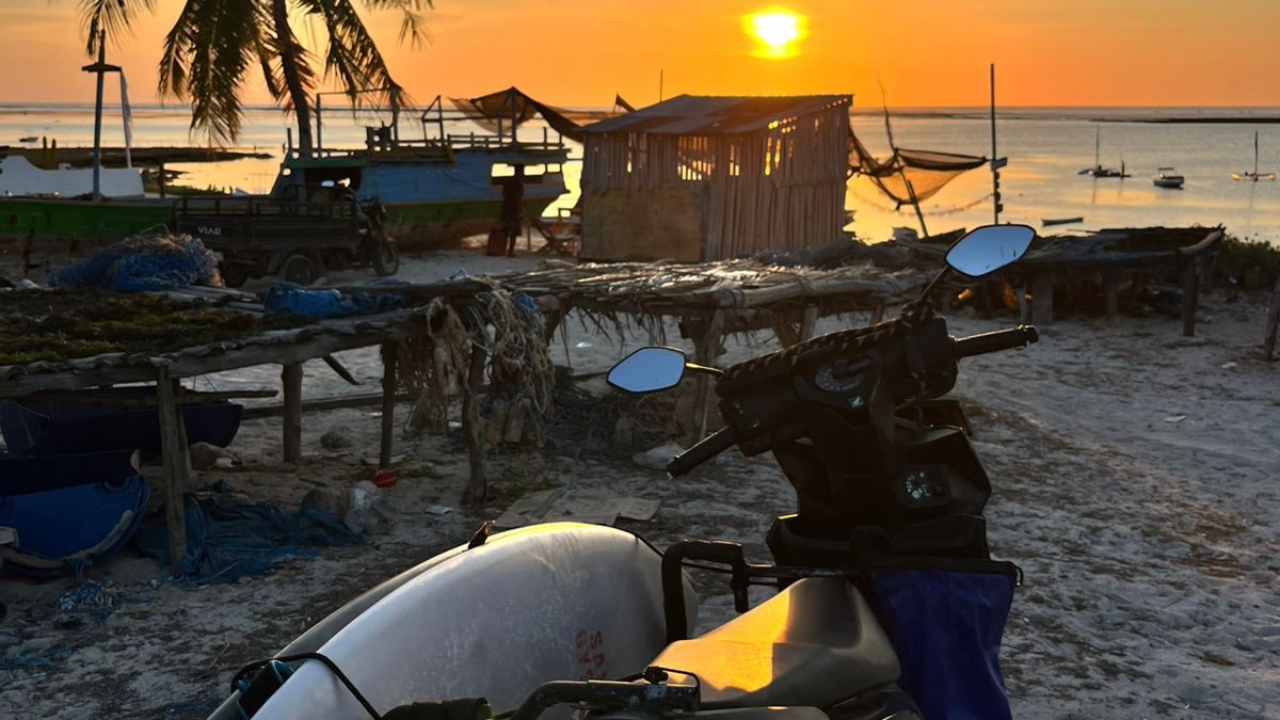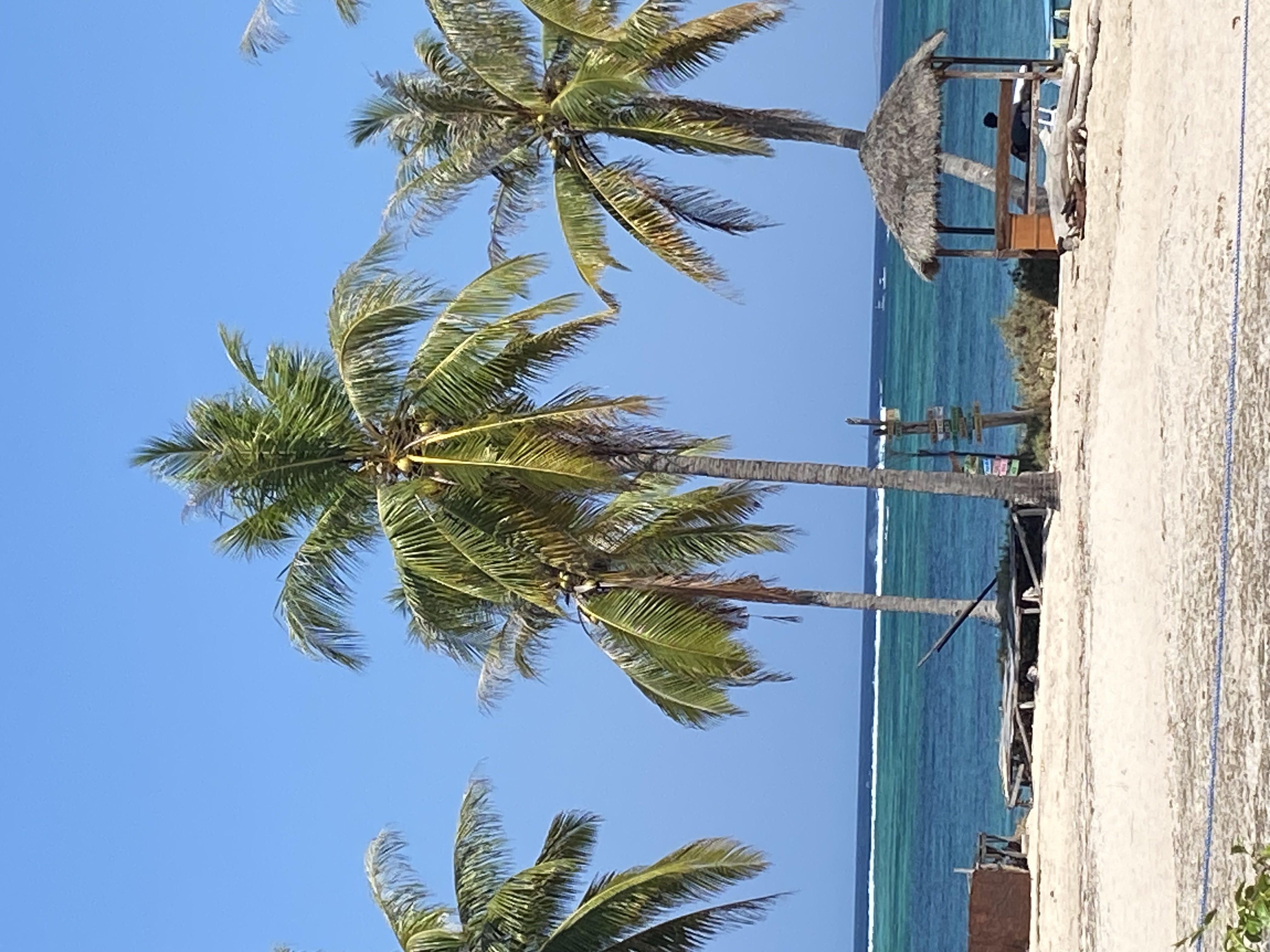What to do with a surf trip hangover
Oct 27, 2025
It’s done - 12 days of non-adulting, spending time with your mates, catching the waves of your dreams, and drinking Bintangs at sunset. The rhythm of surf, eat, sleep, repeat shifts back to wake up, eat, maybe surf, get kids ready for school, start the work day, pick up kids, maybe surf, get dinner on the table - repeat. The fall isn’t always soft. The comedown can be miserable, especially if you return to your home break and it is howling northerlies and un-surfable.
In my experience, surf trips need a recovery of their own. They require a sense of re-adjusting. Something that allows you to maintain hope, and a method of integrating your surf trip back into your day-to-day routine, like an intricately woven Ikat (traditional cloth weaving of Indonesia). Here are my top three tips and a special tool for you to use, that will help you mitigate the pain of a surf trip hangover, and intertwine that epic experience into your day-to-day life, so that your surf trip stoke lives on.
Tip 1: Go over your photos straight away
I’m a sucker for taking heaps of photos and leaving them in the abyss of my phone. I don’t recommend that. Instead, within the first few days of returning, put your surf trip photos in a special folder on your device. Perhaps even get 1 or 2 printed.
It’s common to return to your day-to-day life, something that is so patterned and repeated, and within the first few days experience a surreal twilight space where you wonder ‘did that surf trip even happen?’ Yes, it did and photos are proof. Run through some photos to re-assure yourself, and to keep the memories alive. I love printing photos to add to my photo ‘adventure wall’ at home or within my clinic. It becomes a great talking point with clients and keeps me motivated to train for the next trip.

Image: view of the reef from my front porch. Yes, this surf trip did happen.
Tip 2: Keep the chat going
There’s nothing like staying in contact with like minded people, just as stoked on life and surf trips as you are, to keep the flame alive.
With The Surfer Reset Experience, we had two Whatsapp group chats going. One was a communication chat group, the other was a photo sharing only group. Both have meant that our friendships and inspiration have continued beyond the cessation of the retreat. We continue to share random images of coffee plungers, our local surf spot conditions and even tattoos that people got after the surf trip. It’s hilarious, heart warming and keeps us sane as we work towards planning our next surf trip. Could it be Mexico calling? Or perhaps a cold water destination like Ireland? Orrrrrr will we all be heading back to remote Indonesia to redeem ourselves on better boards and with more cement in our ovaries?
Whatever trip ideas pop into your mind, you know who will most likely be up for it and ready to charge? The legends you just made friends with during your most recent trip. So, even if you have to be the one to initiate it, I strongly suggest keeping the chat alive!
Tip 3: Review and analyse
This is a trick that the best athletes in the world utilise. Once they have finished an event or contest and come back down to the ground, they carefully analyse their performance. What went well on your surf trip? What didn’t go so well? What are some things to work on for next time? What were some strengths you didn’t know you had?
For an analysis like this, I like to use our Self-SWOT analysis, which we incorporate in our training programs here at The Female Surfer. It’s a simple tool that you can keep brief, or completely debrief in depth, under each topic. SWOT stands for:
- Strengths
- Weaknesses
- Opportunities
- Threats
Under each of these headings, you write what your strengths were during the trip, what your weaknesses were, any opportunities that you noticed and any threats to your surfing on the trip.
Here’s a quick version of my own self-SWOT analysis
Strengths:
- Paddle fitness and paddle power - Helped me onto waves. Helped me paddle out of trouble and get out of the way of massive sets. High wave count and safety - yew!
- Surf fitness - meant I could take on more critical waves and was comfortable with the throw downs and tumbles I had under water. I felt surprisingly relaxed under water and comfortable with my breathholds.
Weaknesses:
- Not a lot of practice on my back hand. It meant that it took me time to get comfortable surfing on my back hand and I ‘kooked’ out on some really great waves that I would have been able to open up on if surfing my forehand. Bummer.
- Board options - I need a bigger board with more glass. I had to surf different sections of the waves, further in and a bit wider, because my board couldn’t paddle onto them otherwise. I know for next time! Just need to add one of these to my quiver.
Opportunities:
- Big wave practice - surfing bigger waves is very different and there’s an opportunity here for me to learn and increase my skills. I spent a lot of time sitting in the channel watching what the locals and good surfers did out there - where they sat, where they took off, the boards they were riding, the lines they surfed and the speed they generated. It’s an art in itself and you can’t surf small waves all year and tackle bigger waves with the same technique. I’m excited to gain more experience in this area.
- Improve my backhand - I actually really like surfing my backhand and re-learning how to do this better, with the help of our surf coaches and guides, made this experience really enjoyable. I’m actually excited to improve my backhand surfing now. Let’s go!
Threats:
- Hip pain - day 10 of surfing twice a day saw some hip pain creep in that I wasn’t expecting. It impacted my pop up on one occasion and given the size of that wave, it was a little scary for me. So I will do some personal investigating and focus on this area with my training, so that any hip issues aren’t a threat to my surfing or safety.
- Food - this was a HUGE threat to my surfing performance and everyone on the trip was feeling it. By day five we were cooked. The reason? Low energy availability. The food at the resort was incredible and very healthy; however, it was largely protein and fibre based. Surfing requires fat and carbohydrates. By day five I was telling everyone to go and eat a chocolate muffin before their afternoon surf. Once we began to carbohydrate load more and include more healthy fats, we were able to ramp up our surfing again. Now that I am aware of what local food is on offer, I will be better prepared for the next trip.
Completing a self- SWOT analysis turns your surf trip from a memory, or one time surfing experience, into a mission and action plan that can keep you going until you book your next trip. It shapes your training and identifies what you can work on over the coming months. You can access our Self-SWOT analysis tool by clicking here - and our team can guide you to turn this tool into a preparation plan for your next surfing adventure.
Returning from a surf trip doesn’t need to be a hangover from hell. It can instead be a graceful landing that leaves you with joy, memories, new friends, and a mission and plan for the future. All it takes is a slightly more active approach. Rather than just settling back into your local surf spot and day-to-day life, take the lessons, friendships and memories from your trip and use these to help you grow as a surfer.
Stay tuned via our social channel to see how I personally do this over the next few weeks, and take advantage of our training tools built for you, today!
It’s been a pleasure. Stay stoked my friends!
Stay connected with news and updates!
Join our mailing list to receive the latest news and updates from our team.
Don't worry, your information will not be shared.
We hate SPAM. We will never sell your information, for any reason.


